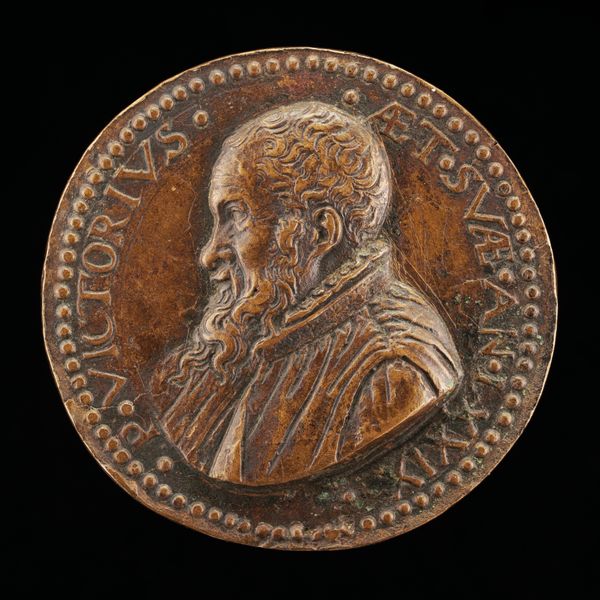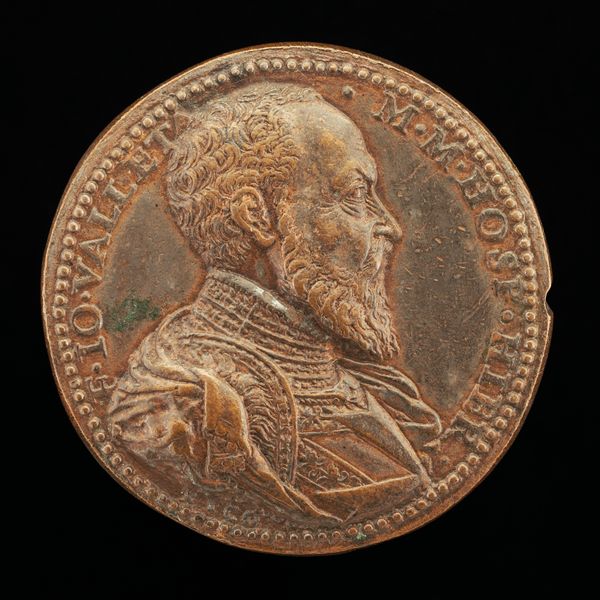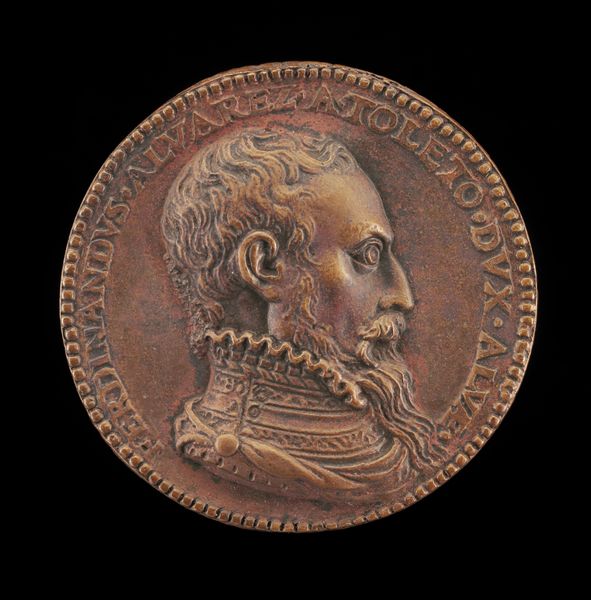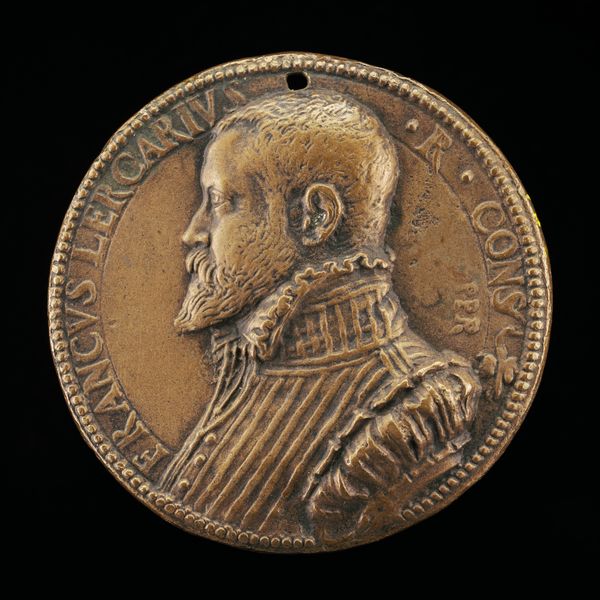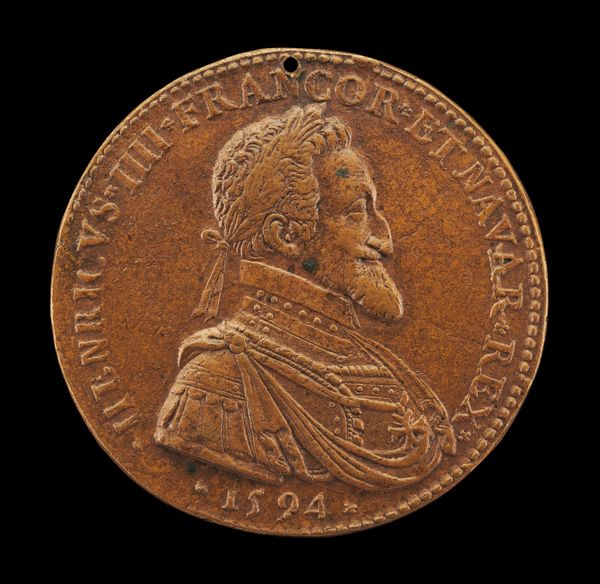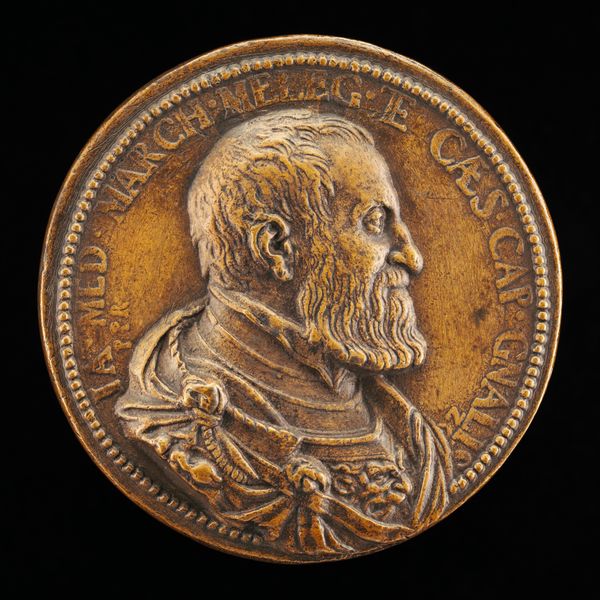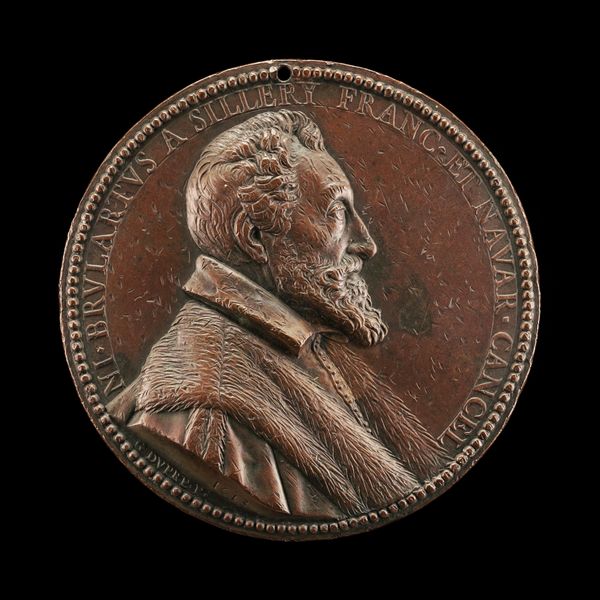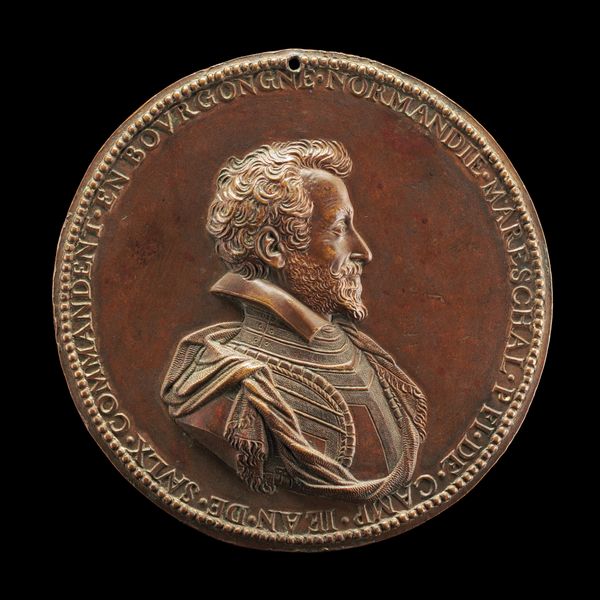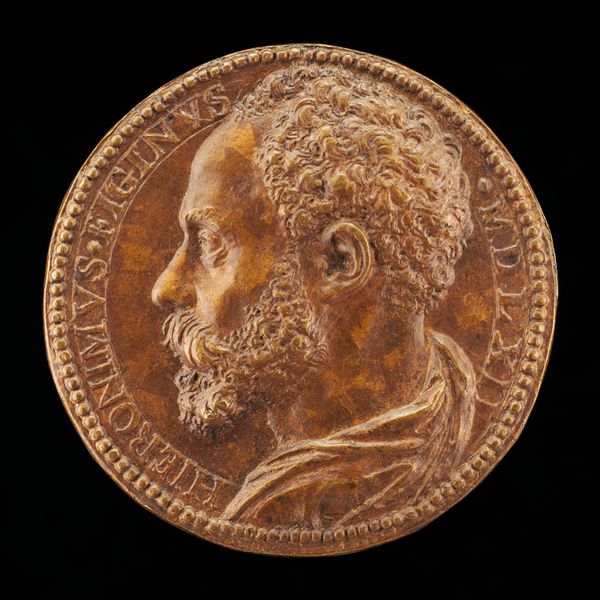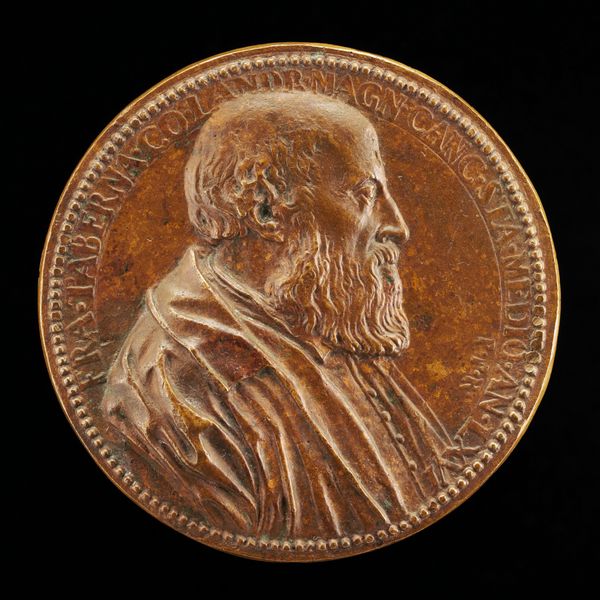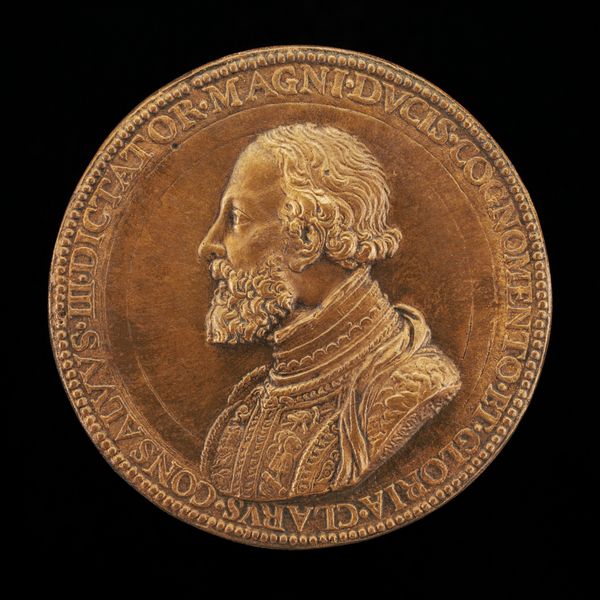![Giambattista Castaldi, 1493-after 1565, Count of Piadena and Cassano [obverse] by Annibale Fontana](/_next/image?url=https%3A%2F%2Fd2w8kbdekdi1gv.cloudfront.net%2FeyJidWNrZXQiOiAiYXJ0ZXJhLWltYWdlcy1idWNrZXQiLCAia2V5IjogImFydHdvcmtzL2U3ZjM2OWJiLTMxZjktNDY4Yi1hZjNlLTY2YjIwNTY1NzdiOS9lN2YzNjliYi0zMWY5LTQ2OGItYWYzZS02NmIyMDU2NTc3YjlfZnVsbC5qcGciLCAiZWRpdHMiOiB7InJlc2l6ZSI6IHsid2lkdGgiOiAxOTIwLCAiaGVpZ2h0IjogMTkyMCwgImZpdCI6ICJpbnNpZGUifX19&w=3840&q=75)
Giambattista Castaldi, 1493-after 1565, Count of Piadena and Cassano [obverse] c. 1562
0:00
0:00
metal, sculpture
#
portrait
#
medal
#
metal
#
sculpture
#
11_renaissance
#
sculpture
Dimensions: overall (diameter): 4.7 cm (1 7/8 in.) gross weight: 39.43 gr (0.087 lb.) axis: 6:00
Copyright: National Gallery of Art: CC0 1.0
Curator: This metal medal presents a profile portrait of Giambattista Castaldi, Count of Piadena and Cassano. It was crafted around 1562 by Annibale Fontana. What strikes you initially about this piece? Editor: The commanding presence! There's a stoic, almost impenetrable aura about this figure. The deep relief gives his features so much definition – particularly the beard, it's meticulously rendered and imposing. It hints at the sort of man who's used to being obeyed. Curator: Exactly! Medals such as this one were often commissioned to immortalize figures of power and status. Fontana was well-versed in the visual language of authority. By creating this medal, he immortalizes Castaldi, situating him within a broader history of power, male identity, and elite social structures. Think of the connotations the material itself has – bronze, enduring and substantial. Editor: So, this medal isn’t simply about celebrating Castaldi, but also about constructing and perpetuating his image. There’s the subtle suggestion here that power, perhaps even virtue, is something that’s passed down the male bloodline, literally etched in bronze. Curator: Precisely. And considering the socio-political landscape of the time – the Italian Renaissance, fraught with wars, shifting alliances and emerging imperial power – these commissions were statements of political allegiance and ambition, influencing the social order. We must look closely at Fontana's craftsmanship and how his talents align with existing power structures. Editor: Yes, even down to the Latin inscription around the portrait. The phrase connects him directly to imperial power, reinforcing his position in that hierarchy. These weren’t just portraits, but statements of political positioning and negotiation, right? And a display of social standing too, which might reinforce patriachal control over social mobility in early modern society. Curator: It’s an incredible example of the power of art to not only represent but to actively shape historical memory. Fontana's skills here weren’t simply about reflecting reality but rather sculpting and immortalizing certain ideologies that had impact well beyond the metal itself. Editor: Looking closely now, this prompts questions about representation, power, and gender roles in 16th-century Italy that reach beyond the immediate impression. Curator: Absolutely. And examining the context – political tensions, patronage networks – gives this little medal tremendous historical weight.
Comments
No comments
Be the first to comment and join the conversation on the ultimate creative platform.
